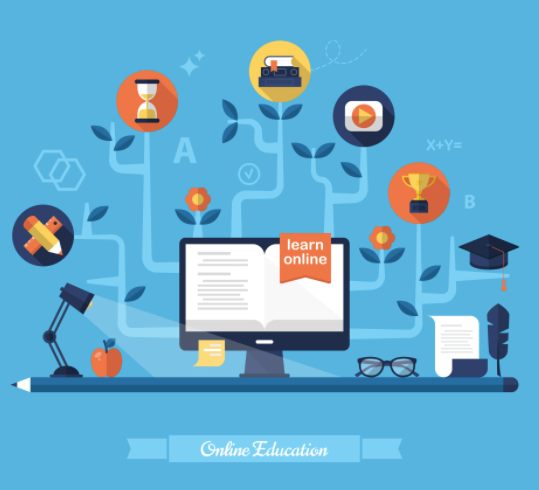If the notion of adding one more item in an already jam-packed curriculum — and teaching day — seems overwhelming, the possibility of incorporating technology into the curriculum is sufficient to drive teachers around. Nevertheless, it would only intensify the need to make emerging technology as simple and familiar to students as pencils and calculators. It is an essential activity for all educators not only to recognize, but to embrace.
The International Society for Education Technology, based in Washington, D.C., suggests that incorporation technology be a focal point for teacher education. According to the National Educational Technology Standards (ISTE), "... qualified participants are constantly expected for their own learning and their students to observe and engage in text cafe join-from-3 in successful modelling of technology use." By spending time to develop this model, educators will not only instil technology in their lesson plans but will also develop a tool that they can use over and over.
You have to invest sweat equity as with any company. When you have never used technology in the classroom, taking a workshop to familiarize yourself with information technology resources and their use in education makes sense. And without further preparation, your project can be divided into manageable steps and you can build the blueprint for your new course plan before you know it. The cycle of model development of technology can be divided into the following phases:
Phase 1: Measuring the benefits
You may be able to add technology to one of your long-established lessons, but first you need to decide whether this benefits students overall. Schools have high expectations that their education courses must follow to ensure that the program meets these requirements.
When students learn curriculum goals and develop a new skill in achieving these goals in their chosen lesson plan, then you have a win-win situation and you can go to the next stage. If you have trouble deciding if that would be the result, sit with a technical advisor, a technology tutor or organizer who maybe another instructor who is enthusiastic about using technology, a media professional or even a highly trained, technology experienced student who is looking for a new challenge. The development expert will help to suit the project needs and objectives.
Phase 2: Begin conceptualizing
Ideally, you should not be alone in your project growth. A team approach can add megawatts to your collective brainpower (with teachers working either on individual lesson plans or an integrated multi-disciplinary lesson plan), particularly if any of your colleagues are experienced technical users. Webbing is a useful tool at this stage: from a central problem to brainstorm, to establish subtopics and associated ideas for creating a visual map. Concept webbing software can help ideas float, such as Inspiration by Inspiration software. You may pick lesson elements such as related ideas or suggested activities from a visual map of ideas, and make sure they are integrated into the lesson plan.
Check out online tools available, such as materials and applications for professional educators. Why do you reinvent the wheel? Useful resources may already be available, including software tips.

Phase 3: Planning the project
You and your team have chosen the ideas, principles and events you want in your curriculum or plans and you have the knowledge to choose the hardware, software and expertise to execute the plan's function and deliver the finished product. Then create a rough diagram or a storyboard of how the idea flows. If your project includes presenting or shooting a video on Microsoft PowerPoint, use a simple template to set what you want on-page.
The storyboarding method is equally critical in creating designs for the students. Through phasing out the project step by step, you ensure that the students do not use extraneous features of multimedia to do the project.
Phase 4: Creating a template for teachers
Some of the toughest challenges when preparing a new technology project is to estimate how long it will take accurately. It can best be achieved by designing a sample project. Now is not the time to skimp on your commitment at this critical point in the modelling process. This is possibly the first step in ensuring the sustainability of a new technology project.
For example, you can choose a simple project to prepare a five-minute speech. This is an ideal way to introduce students to the public and encourage them to use concise writing skills in order to build a process model to perform a particular task such as baking chocolate chip cookies. If you and your students are new to technology, a gradual presentation on how to do your project is a good subject for your sample project — for example, a PowerPoint introduction on how to show PowerPoint or a digital video on how to create a digital video.
By designing a model project, you obtain the requisite context knowledge to teach your students and to perfect the parameters of the project. You will also get a good picture of the time, resources, planning and personnel required to succeed in the project. A teacher who uses the technology uncomfortable can be tempted to bypass this move. A warning word: don't! Asking students to build their projects without adequate direction or planning leads to dissatisfaction and weighs down future positive outcomes.
You are at the do-one level, in the model "see one, do one, teach one." And please do it! Just do it!
Phase 5: Developing tools for assessment
While the cycle remains fresh in your mind, it is time to focus on the skills and the knowledge that students display throughout their project. Develop a segment to create a means for performance-based student job evaluation. Identify the grammar, spelling, material, technical skills, layout and presentation you offer.
By giving the students the rubric before the project begins, you set your standards clearly. There are several tools available online to help you create an ideal area.

Phase 6: Planning how to perform an evaluation
After your sample project has been completed, it's time to determine what succeeded and not. Which was missing or insufficient money or technology? What did you find along the way you wanted to know when you began? Is there a way to streamline the development cycle to achieve the goals of the lesson or to make the project more efficient? Through looking at the process, answering and integrating their responses into the model for your new lesson plan, you will find you have the ability to work with your students effectively and deal with potential shortcomings.
Each additional class will deepen your experience and expand your horizons. Think of it as an unofficial phase 7 in which you and your future students earn your investment dividends.

